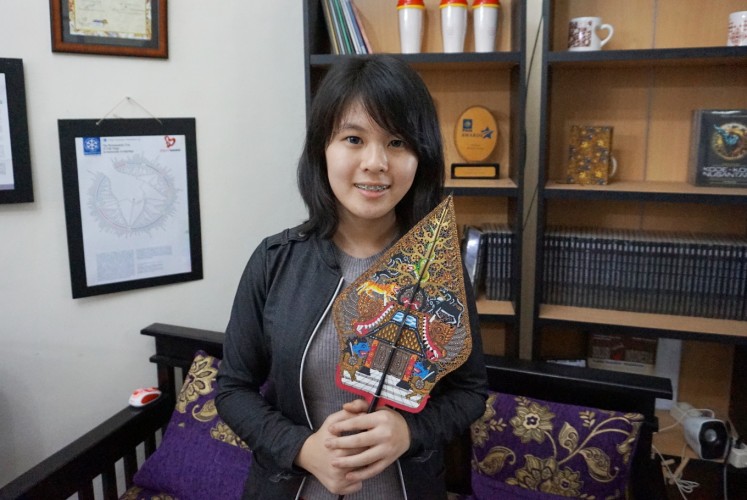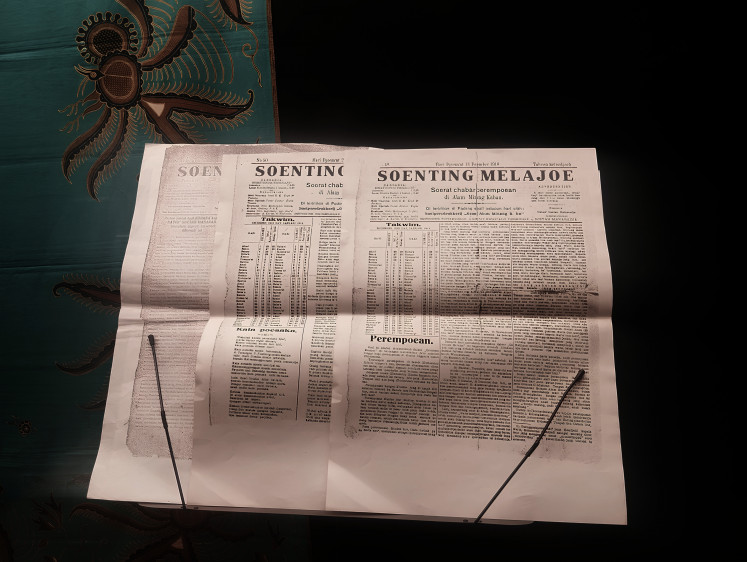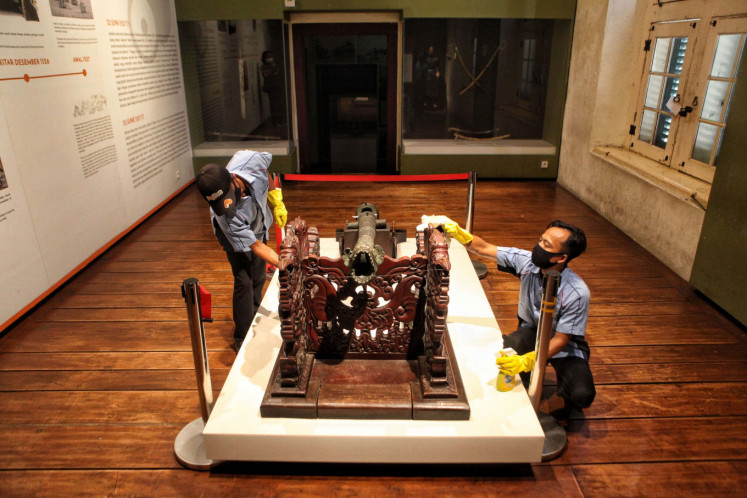Student discovers, regenerates fractals in wayang's Tree of Life
A new research paper on "Regenerating Indonesia's Traditional Tree of Life" by a student at Trimulia HITS Christian junior high school in Bandung reveals that kayon also contains fractal geometry. Alvina Patricia Wijaya,
Change text size
Gift Premium Articles
to Anyone
 A 'dhalang' (puppet master) wields a 'gunungan', also known as ''kayon', behind the screen during a wayang performance. (Shutterstock/File)
A 'dhalang' (puppet master) wields a 'gunungan', also known as ''kayon', behind the screen during a wayang performance. (Shutterstock/File)
In an Indonesian wayang (shadow puppet) performance, a triangular puppet called kayon opens and closes the show.
The kayon's design is typically a montage featuring a variety of symbols and motifs, such as animals, plants and other elements of the universe. One of the standout elements in a wayang show is the "Tree of Life" that appears in the center of the kayon.
A new research paper on "Regenerating Indonesia's Traditional Tree of Life" by a student at Trimulia HITS Christian junior high school in Bandung reveals that the kayon, or gunungan contains fractals.
“I researched the kayon because it's rather less well-known [among wayang puppets] and there are only a few kayon makers today,” said Alvina Patricia Wijaya, the author of the student research paper.
In addition to preserving the culture of Javanese wayang, in her paper, Alvina also attempted to discover the mathematical formula behind the Tree of Life so others could recreate the pattern and develop it further.
Read also: 'Wayang golek’ makes appearance at World Festival of Puppet Theater in France

According to gizmodo.com, fractal geometry is a relatively new branch of mathematics that was founded in the 1970s. Similar to classical geometry, fractal geometry explores making, measuring and defining complex shapes, but focuses exclusively on infinitely repeating patterns that make up a shape, or a fractal.
Alvina said kayon had small, repeating motifs in its design, one of the characteristics of a fractal pattern. However, as fractals must have a dimension between one and two or two and three, Alvina used the Hausdorff method to calculate the dimensions of the Tree of Life and the NetLogo programming and modeling environment to regenerate its design.
She used 15 kayon as a research sample, and admitted it was hard to find kayon. “There are very few compared to other types of wayang that could be [found] in the hundreds,” Alvina said, adding that she spent around five months gathering the data and another year on research and analysis.
Her results showed that the fractal dimension of the kayon's Tree of Life was between one and two, while the average dimension of the Tree of Life in her sample was 1.5. Moreover, she discovered that the fractals in the Tree of Life could be generated computationally as a basic template, which could then be used for creating future variations on its design.
Alvina has taken her research paper and flown to Kathmandu, Nepal, along with other students representing Indonesia, to compete in the ongoing Sixth Asia Pacific Conference of Young Scientists 2017, which runs from Nov. 1-5. (kes)









